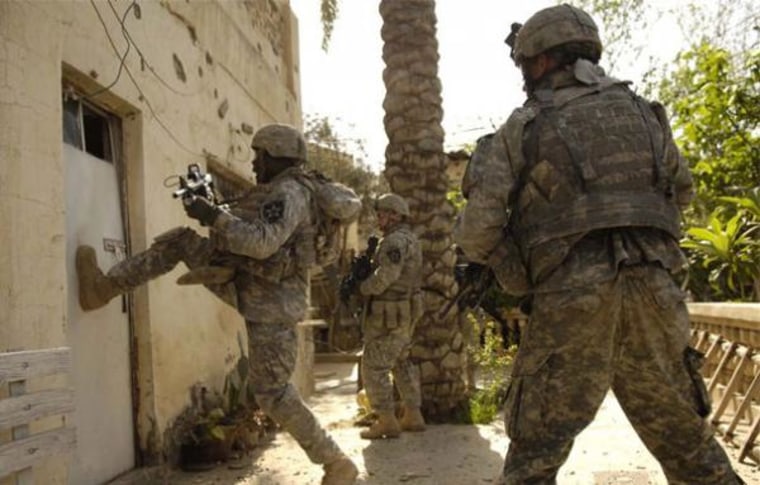U.S. troops in combat don't know what might await them inside a building. That equation could soon change because of a radar system capable of seeing through walls and providing real-time video of what's happening.
In recent tests, the radar showed humans moving behind solid concrete and cinder-block walls. Its developers at the Massachusetts Institute of Technology envision it mounted on a military vehicle and providing video through walls as far as 60 feet (18 meters) away at a rate of 10.8 frames per second — far better than past radar technologies.
"If you're in a high-risk combat situation, you don't want one image every 20 minutes, and you don't want to have to stand right next to a potentially dangerous building," said radar project leader Gregory Charvat of MIT Lincoln Laboratory.
It isn't easy to get radar to capture images of what's going on behind an 8-inch-thick concrete wall, which reflects more than 99 percent of radar waves aimed at it. The weakened radar energy that does get through the wall and bounces off a target must then rerun the gantlet, again facing a 99 percent reflection rate.
The MIT team chose to use S-band waves, which have a short wavelength similar to that of wireless Internet. Shorter wavelengths have more trouble passing through walls, but that problem was fixed by amplifiers, and the wavelengths allow for smaller radar devices to receive the reflected signals. MIT researchers created an array of antennas just 8½ feet long.
"This, we believe, was a sweet spot, because we think it would be mounted on a vehicle of some kind," Charvat said.
An analog crystal filter helped the radar system screen out the wall's bright radar signal so that the resulting video would focus on what's behind the wall.
There's still work to be done before the system truly resembles Superman-style X-ray vision. For instance, the radar can detect even slight movement, but not anything that's standing as still as furniture.
Also, moving objects still show up as blobs moving around on the video screen, as though the observer were watching from above. Charvat and his colleagues want to create algorithms that convert the blob into a more user-friendly image.
The radar eventually could help police or emergency-response teams, but the researchers said they developed their technology with the U.S. military in mind.
"This is meant for the urban war fighter … those situations where it's very stressful and it'd be great to know what's behind that wall," Charvat said.
Follow InnovationNewsDaily on Twitter @News_Innovation, or on Facebook.
